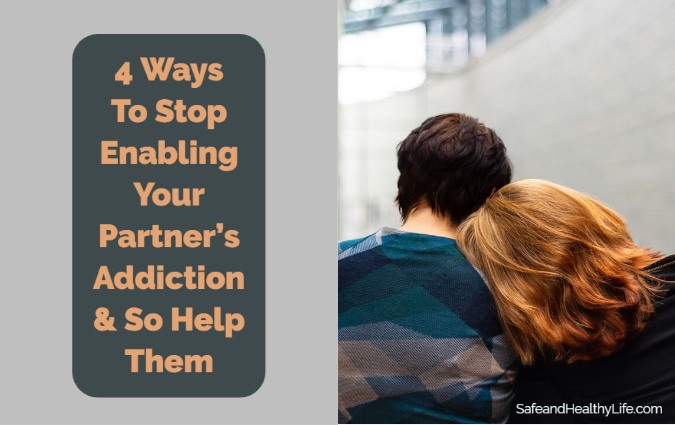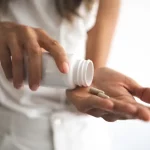“It hurts to love. It’s like giving yourself to be flayed, and knowing that at any moment the other person may just walk off with your skin.”
– Susan Sontag, New York author and filmmaker Quote from “Reborn: Journals and Notebooks, 1947-1963”
We always hurt the one we love. The theme of many heartfelt ballads of love lost…
But why do we do it? Love, since time immemorial, has always involved this seemingly paradoxical behavior. So, why? Psychologists agree that there are 3 distinct types of this particular paradox, which are:
- Hurting the one who loves you: Quite different from “hurting the one you love,” yet very common. Treat ‘em mean, keep ‘em keen, in reality. Love needs reciprocity – its lack can be emotionally painful for those on the [non] receiving end. It’s the definition of “unrequited love.”
- Intentionally hurting the one you love: Oh, yes. Often, lovers will hurt their beloved to demonstrate their continuing independence. Or think of the person who loves someone married to someone else… Constantly threatening to end the relationship may seem odd in the short-term; however, in the long-term, it may encourage the other to end their marriage.
- Unintentionally hurting the one you love: aka The mistake. Love is intense, intimate, and close-up. The more time 2 people spend together, the greater the chance of genuine mistakes, and errors in judgment – we are human, after all. It can also emanate from simply feeling freer to express yourself.
What is Enabling?
Enabling is a behavior, whether intentional or not, that ensures a substance-addicted person can still continue their misuse of either drugs or alcohol – this can be directly or indirectly. It’s usually the case that the “enabler” is personally close to the addict, and is often a partner, family member or close friend.
Here are some clear examples of an enabler’s behaviors:
- The provision of financial support for an addict who is not engaged in the process of seeking treatment
- The provision of excuses for, and even lies to cover, their substance abuse
- The ignorance or minimization of the severity of their problem
- The act of misusing drugs or alcohol with them
- The provision of money in order for the addict to buy drugs or alcohol
- Hiding their substance abuse from others
Enabling is a prime example of wanting to please your loved one, and to make them happy, especially at times when you think they are suffering.
Obviously, the ideal scenario would be to get the addict into professional addiction treatment, either as an inpatient (or resident) at a rehab facility or as an outpatient at either a rehab center or within a hospital/clinical setting.
However, just as addicts live day-to-day in terms of feeding their addiction, many enablers live the same way, often feeling helpless, and feeling there is no way to break the normal events of the day.
That is not the case. Read on…
If you really want to get your loved one into this kind of treatment, the first step is to acknowledge your enabling behaviors. Maybe some of the examples in the list above feel very familiar to you… Once you understand how exactly you are enabling their addiction, albeit indirectly, then you can then stop those behaviors. In turn, your focus then changes from supporting your loved one’s addiction to supporting them to getting help and entering into recovery.
A Personal Note: I am writing predominantly from personal experience, though have since become involved in helping addicts to find treatment. I was once where you are – in a relationship with an addict (cocaine, and later opioids painkillers, were their substances of choice).
I know what you are dealing with day-in, day-out. It’s tough, for sure, but watching someone nearly dying from addiction is harder. You seriously never want it to get to that point. Thankfully, a Colorado residential rehab center, and later an outpatient rehab in Denver, saved their life. Please read on…
#1. Setting Clear Boundaries
Addicts need boundaries because the addiction is more than happy to break the regular social ones that already exist. Those in any form of enabling relationship with an addict are not putting their own needs first, and that is exactly what you do need to do.
Boundaries, clearly stated, achieve this. They also clearly state that you are no longer willing to enable addiction.
Examples of clear boundaries you can set include:
- Telling the addict they are no longer allowed to use drugs or alcohol in the home
- Refusing to give the addict any money that you know (or may suspect) they will use for drugs or alcohol
- Do not give the addict money to compensate for a job loss due to their substance abuse
- Do not allow the addict to bring others who use drugs or alcohol into the home
Setting clear boundaries is not giving the addict a series of ultimatums, which can sometimes be necessary but also be perceived as more threatening. In fact, in any healthy relationship, it is quite normal.
However, relationships that involve enabling an addiction (and include that you give up your own resources, eg. your money or your time, are not healthy.
#2. Understanding If Your Relationship Has Become “Codependent”
“Codependency” is a harmful dynamic in which a person feels that any love and security they receive from a relationship – (romantic, friendship, or familial) – is dependent upon taking care of someone, regardless of the personal cost to yourself.
A codependent relationship is extremely common among people with an addiction and is the reason for many enabling behaviors.
Codependent relationships happen most often when someone closest to the addict is involved, such as a child, a parent, a best friend, or a spouse.
The most common signs of a codependent relationship include:
- Neglecting yourself and your own needs
- Neglecting other relationships in your life
- Failing to set or enforce boundaries
- Feeling hurt or troubled by any negative reaction
- Giving unreciprocated loyalty
- The feeling that you have little or no room in your life for anything other than taking care of the addict
- Feeling constantly overly concerned about what the addict is doing
If you think you are in a codependent relationship with an addict, you need to understand how damaging this is to you.
Often, working through codependency is only normally accomplished through counseling – addiction rehab programs offer this as part of the addict’s treatment plan.
#3. Do Not Make Any Excuses For The Addict’s Substance Misuse
It is a common occurrence for any partner, family member, or friend to be put in the position where they need to lie or make an excuse to hide the actual truth of the addiction.
Often, it is done as a way of protecting the addict from harmful legal, personal, or other consequences. Making an excuse or telling a lie is enabling their addiction to continue as it is. In fact, you are normalizing a situation that is far from normal.
#4. You Are Not Alone – Get Support From Others
Addiction affects everyone close to an addict, not just the addict themselves. You must always remember that. You may not be misusing substances, but you are still intrinsically affected by this chronic disease.
Addicts cannot be expected to recover by themselves. Neither can you. Getting in touch with support groups and other individuals in similar circumstances can be a huge source of relief and guidance.
Furthermore, by sharing within your own family group, although possibly difficult at first, you will be better placed, alongside these others, to get the right professional treatment for the addict.
Have you had the experience of being in an addicted or codependent relationship? What advice would you offer to those in a similar situation? Please let us know.
About The Author:
Andy Macia is a recovering drug addict/alcoholic with over 10 years of sobriety. He was born in Bogota, Colombia, but raised in Los Angeles California. He is an avid rehab blogger and digital marketing entrepreneur.




![3 Breathing Techniques Which Relieve Anxiety [And The Science Behind Them] Breathing Techniques Which Relieve Anxiety](https://www.safeandhealthylife.com/wp-content/uploads/2021/09/Breathing-Techniques-Which-Relieve-Anxiety-150x150.jpg)
